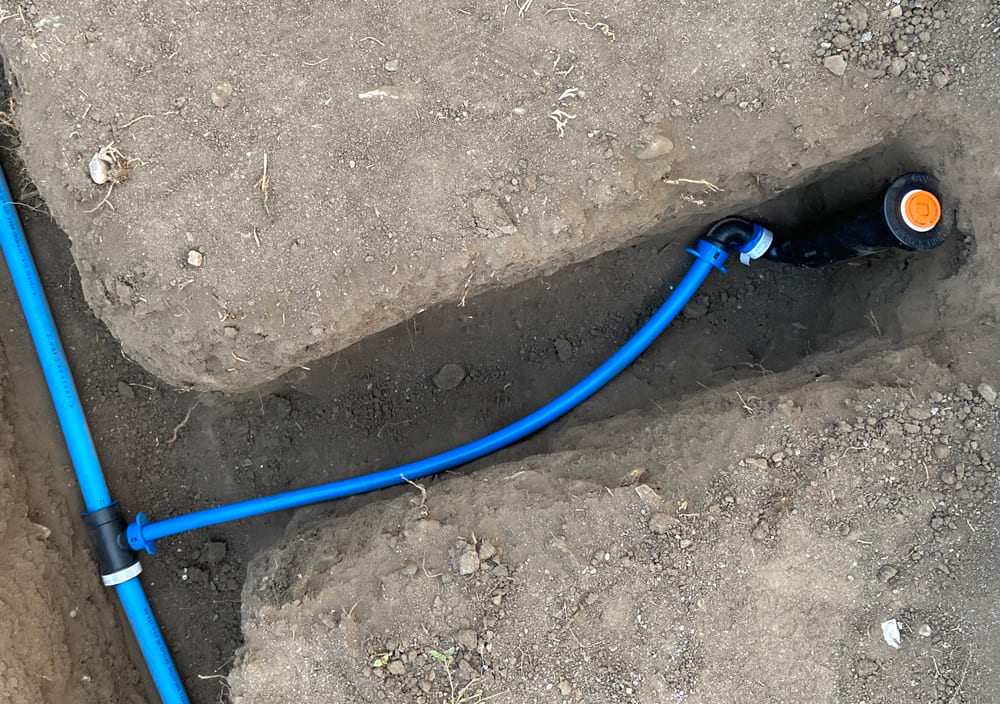PEX irrigation is an innovative approach to watering your garden, lawn, or landscape.

What is PEX?
Before we delve into the specifics of PEX irrigation, it’s essential to understand what PEX is and why it’s becoming increasingly popular.
PEX, or cross-linked polyethylene, is a flexible, durable, and cost-effective material commonly used in plumbing applications.
In recent years, PEX has gained popularity as an alternative to traditional PVC or polyethylene pipes for irrigation systems.
Advantages of PEX Irrigation
There are several advantages to using PEX for your irrigation needs, including:
Flexibility
PEX’s flexibility allows it to be easily bent and maneuvered around obstacles, making it ideal for navigating complex landscapes.
This flexibility also means that fewer fittings and connections are needed, reducing the risk of leaks and simplifying installation.
Durability
PEX is highly resistant to damage from freezing and thawing, making it a suitable choice for colder climates.
Additionally, PEX is resistant to corrosion and mineral buildup, ensuring a longer lifespan for your irrigation system.
Cost-Effectiveness
PEX is typically less expensive than other materials, such as copper or PVC, making it an affordable option for homeowners and landscapers.
The ease of installation also contributes to its cost-effectiveness, as less time and labor are required.
Components of a PEX Irrigation System
A PEX irrigation system is comprised of several key components, including:
PEX Tubing
PEX tubing is the backbone of your irrigation system, responsible for transporting water to various areas of your landscape.
PEX tubing is available in various diameters, with 1/2-inch and 3/4-inch being the most common sizes for residential irrigation systems.
Fittings and Connectors
Fittings and connectors are used to join PEX tubing and create a watertight seal.
There are several types of PEX fittings available, including push-fit, crimp, and clamp fittings.
Valves
Valves are an essential component of any irrigation system, allowing you to control the flow of water to different zones.
For PEX irrigation systems, you’ll need compatible PEX valves, such as ball valves or gate valves.
Sprinkler Heads and Drip Emitters
Sprinkler heads and drip emitters are the endpoints of your PEX irrigation system, responsible for distributing water to your plants and lawn.
There are various types of sprinkler heads and drip emitters available, so you can choose the best option for your specific needs.
Installing a PEX Irrigation System
Installing a PEX irrigation system is a relatively straightforward process, especially if you have some experience with plumbing or landscaping.
Here’s a general outline of the installation process:
- Create a plan for your irrigation system, mapping out the location of PEX tubing, sprinkler heads, and drip emitters.
- Dig trenches for your PEX tubing, following your plan and ensuring that the trenches are deep enough to protect the tubing from potential damage.
- Lay the PEX tubing in the trenches, connecting it to your water supply and running it to the various zones of your landscape.
- Install the fittings and connectors, joining the PEX tubing and creating a watertight seal.
- Attach the valves to the PEX tubing, allowing you to control the flow of water to different zones.
- Install the sprinkler heads and drip emitters, connecting them to the PEX tubing and positioning them according to your plan.
- Test your irrigation system, ensuring that there are no leaks and that water is being distributed evenly.
Maintaining Your PEX Irrigation System
To keep your PEX irrigation system running smoothly, it’s essential to perform regular maintenance.
Some maintenance tasks to keep in mind include:
- Inspecting your PEX tubing for damage, such as cracks or punctures, and repairing or replacing it as needed.
- Checking your fittings and connectors for leaks and tightening or replacing them if necessary.
- Cleaning your sprinkler heads and drip emitters to remove any debris or mineral buildup.
- Winterizing your irrigation system by draining the water and insulating the PEX tubing to prevent damage from freezing.
Real-Life Examples of PEX Irrigation Systems
To illustrate the benefits of PEX irrigation, let’s look at some real-life examples.
Example 1: A Residential Garden
A homeowner wanted to install an irrigation system for their garden but was concerned about the cost and complexity of traditional PVC systems.
After researching PEX irrigation, they decided to give it a try and were thrilled with the results.
The flexibility of the PEX tubing made installation a breeze, and the system has been running smoothly with minimal maintenance.
Example 2: A Commercial Landscape
A commercial landscaper was tasked with designing and installing an irrigation system for a large property with a complex landscape.
They chose to use PEX irrigation due to its flexibility and durability, allowing them to navigate the various obstacles and contours of the property with ease.
The completed PEX irrigation system has proven to be reliable and efficient, meeting the needs of the property owner and the landscape.
Conclusion
In conclusion, PEX irrigation systems offer a flexible, durable, and cost-effective solution for watering your garden, lawn, or landscape.
By understanding the components and installation process, you can enjoy the benefits of a PEX irrigation system for years to come.
